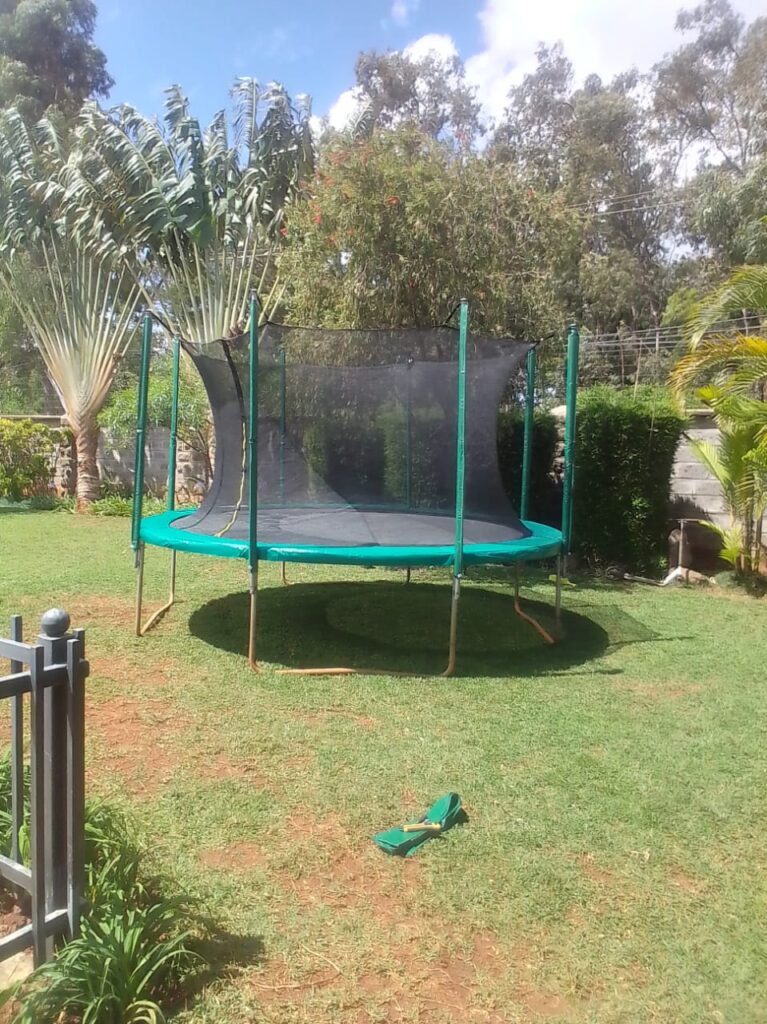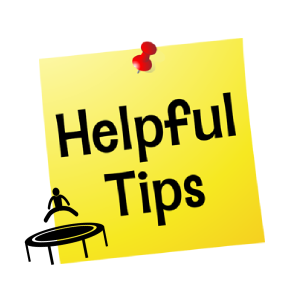Garden Trampolines

Garden trampolines are a popular choice for both recreational and competitive purposes. They offer an affordable way for children to enjoy aerobic activity and develop their gymnastic skills. However, it’s important to prioritize safety as trampoline-related injuries have become a concern for hospital Emergency Departments.
When using garden trampolines, it is important to keep these safety points in mind:
Age Considerations: Trampolining is not suitable for children under six years old as they may lack the physical development necessary to control their bouncing effectively.
Potential Injuries: There are different body parts where injuries may occur, including the neck, arms, legs, face, and head. However, injuries to the head and neck tend to be more serious. Awkward landings may result in sprains or fractures in the wrist, forearm, elbow, and collarbone.
Adult Supervision: While adult supervision is important, it does not guarantee safety. Surprisingly, more than half of all trampoline accidents occur under supervision. However, having a trained spotter present can significantly reduce the risk of injuries.
Avoid Alcohol: It is crucial never to combine alcohol consumption with trampolining, especially when children are involved. Accidents have occurred when children were bouncing with adults who had been drinking at summer garden parties.
Regardless of your skill level, joining a local trampolining club is highly recommended. These clubs offer opportunities to learn new skills, starting from basic landings to advanced moves like somersaults.
For parents, here is some additional advice to ensure a safe trampolining experience:
Before purchasing a trampoline:
Opt for a model with safety pads that cover the springs, hooks, and frame. The color of the pads should contrast with the frame.
Consider models with built-in safety netting or purchase it separately. The netting should prevent bouncers from colliding with rigid components such as springs or the frame, as well as prevent bouncing off the trampoline.
Make sure new trampolines meet the European Standard EN71-14:2014 for trampolines designed for domestic use.
Choosing the right location:
Ideally, place the trampoline on energy-absorbing ground, such as a soft and springy lawn, or use bark wood chip, sand, or other cushioning materials.
If you don’t have safety netting, create a safe zone of at least 2.5 meters around the trampoline. Clear the area of toys and other objects like trees, washing lines, poles, glass frames, or hard items. Avoid placing the trampoline on concrete, tarmac, or hard-packed mud without absorbent safety matting.
Regular checks and maintenance:
Ensure trampolines are securely tied down before each use.
Check that the padding and nets are properly in place and that the springs and metal parts are adequately covered.
During windy days or winter, consider disassembling and storing the trampoline to prevent damage.
To prevent unsupervised access by younger children, it’s best to remove the ladder from your trampoline when it’s not in use. Here are some rules to follow for safe trampoline usage:
Encourage one person to use the trampoline at a time. Over 60% of injuries occur when multiple individuals are on the trampoline simultaneously, with the lighter person being at a higher risk of injury.
Discourage somersaults or risky complicated moves unless the individuals performing them are trained and highly skilled.
Never allow bouncing off the trampoline or a bouncing exit.
It is not safe for children under six years old to use trampolines. It is important for adults to supervise children while they use garden trampolines.
- Trampoline vs Sensory Play Mats: What’s Better for Children with Autism?
- Where to Find the Best Trampoline for Sale in Nairobi
- Trampolines at Weddings? How Kenyan Event Planners Are Thinking Outside the Box
- How Trampolining in Nairobi Encourages Cross-Generational Involvement
- Birthday Parties on a Trampoline? Here’s How to Do It Safely and Creatively


